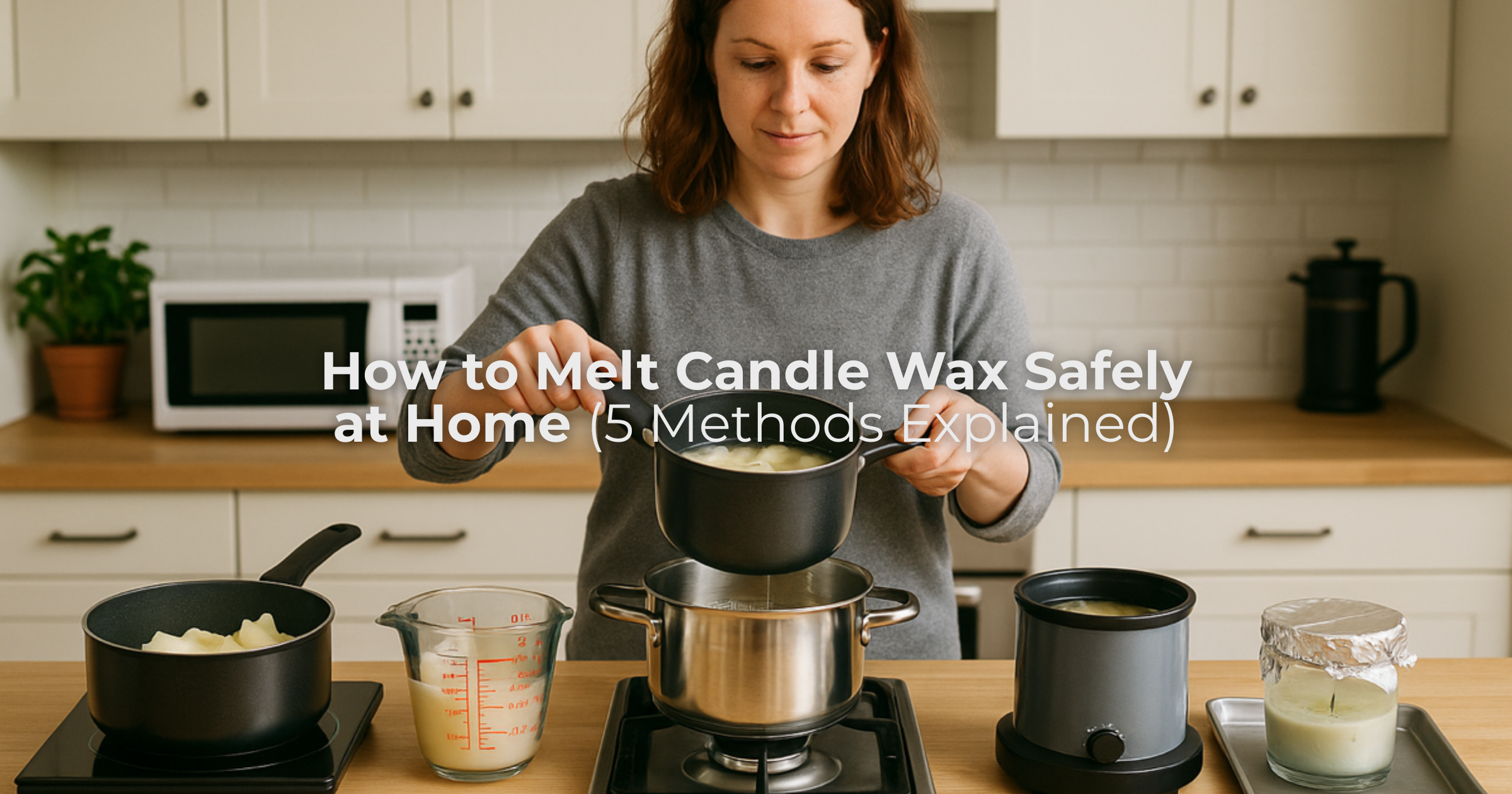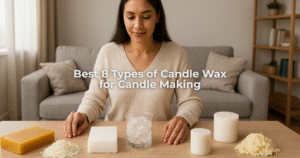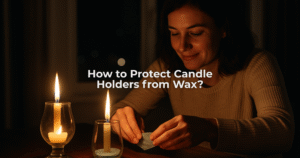How to Melt Candle Wax Safely at Home (5 Methods Explained)

I started melting leftover candle wax years ago when I realized how much wax gets wasted at the bottom of jars.
Once I learned the right methods, it completely changed how I reuse candles. Melting candle wax isn’t just about softening it — it’s about doing it safely and maintaining fragrance, texture, and quality.
Whether you’re trying to remelt leftover candles or start a DIY candle-making project, understanding proper wax temperature control and melting techniques helps you achieve smooth, even results.
In this guide, I’ll share the most effective methods I’ve tested myself — from using a stove or microwave to a double boiler, wax melter, and even an aluminum foil trick — so you can melt wax safely without losing its fragrance or color.
How to Melt Candle Wax at Home?
Want to reuse leftover candles or start making your own? Learn how to melt candle wax safely at home using five easy and reliable methods.
From the stove and microwave to the double boiler, wax melter, and aluminum foil technique, these steps help you achieve smooth, even melting while preserving fragrance and color.
1. Melt Candle Wax on the Stove
The stove method is one of the simplest ways to melt wax safely at home. I use it when handling medium batches of soy, paraffin, or beeswax.
Each wax type melts differently: paraffin around 130°F (54°C), soy around 170°F (77°C), and beeswax near 145°F (63°C).
To melt, fill a pot halfway with water and place a heat-resistant container or pouring jug inside it.
This creates an improvised double boiler, allowing indirect heat to melt the wax evenly. Avoid direct contact with the flame, which can lead to wax overheating risks.
Cut the wax into smaller pieces, stir occasionally with a wax stirrer, and monitor the melting point using a thermometer.
Once liquefied, remove it carefully and let it cool slightly before reusing. This method gives you excellent control and produces smooth wax consistency, ideal for reuse or fresh pours.
2. Melt Candle Wax in the Microwave
When you want something quick, the microwave melting technique works surprisingly well for small batches. I use this method when I need to remelt old candle wax for tealights or scent samples.
Place evenly cut wax chunks into a microwave-safe container and heat for 30–45 seconds at medium power. Stir between intervals until fully melted.
Stop once the wax is mostly liquid — residual heat will finish the melting. Overheating can cause smoke or uneven texture, especially with soy wax or coconut wax.
Always melt in short bursts and keep the wax under 185°F (85°C) to preserve fragrance. The microwave is fast but demands attention, so never leave it unattended.
This method works best when you’re repurposing small leftover wax portions or testing new fragrance blends.
3. Melt Candle Wax Using a Double Boiler
For anyone serious about candle making, the double-boiler method remains the gold standard. It’s safe, consistent, and prevents scorching or wax discoloration.
Fill the bottom pot with water and place your melting pot or pouring pitcher on top. Let the water simmer gently.
The indirect heat ensures uniform heat conduction while protecting the wax from sudden temperature spikes.
I prefer this approach when melting large batches or combining wax blends, such as soy-paraffin mixtures. Maintain steady heat and stir slowly until the wax becomes transparent and smooth.
It’s also the perfect moment to add fragrance oils or candle dyes, but only once the wax cools slightly below its flash point.
The result is perfectly melted wax with even color and strong scent throw — ideal for pouring new candles or crafting wax melts.
4. Melt Candle Wax Using Wax Melter
Once I started making candles regularly, investing in a wax melter made the process easier and cleaner.
A melter is a specialized melting tool for candles that keeps wax at a steady temperature without constant monitoring.
I usually set mine around 180–190°F (82–88°C). This helps maintain consistent viscosity and prevents crystallization or color bleeding during the cooling process.
A built-in thermostat allows you to melt large quantities evenly and pour directly using the spout.
Wax melters are ideal for frequent use or when working with multiple batches. They reduce waste, provide precise control, and ensure every candle looks professional once cooled.
If you plan to experiment with blending soy, beeswax, or palm wax, a melter is worth considering.
5. Melt Candle Wax Using Aluminum Foil
If you only have a small amount of wax left in old jars, try this easy aluminum foil method.
Cover the top of the jar with foil, leaving a small vent hole, and place it on a baking tray. Set the oven to 180°F (82°C) and let it sit for about 10 minutes.
The gentle heat softens the leftover candle wax without burning it. Once liquefied, carefully remove and pour it into a silicone mold or another container.
This method is perfect for remelting leftover candles or salvaging wax from containers you want to reuse.
Always wear heat gloves when handling hot jars. It’s a safe, budget-friendly trick that helps reduce waste while giving you usable wax for smaller projects.
Final Thoughts
Melting candle wax isn’t just a task; it’s an essential skill in the candle-making process. From controlling temperature to choosing the right tools, every detail affects the result.
Whether you’re using a double boiler, microwave, or wax melter, focus on melting wax safely to preserve its quality and fragrance.
Experiment with fragrance oil mixing, wax dye blending, and cooling techniques to create candles with smooth finishes and excellent scent throw.
Once you learn to melt and reuse wax effectively, even small leftovers can turn into something beautiful.
If you prefer enjoying artisanal candles without the DIY work, explore the handcrafted collection at Karigar Style.
FAQs on Wax Melting
Can you melt candle wax in boiling water?
Yes, but only with indirect heat. Place the wax container in a pot of simmering water, similar to a double boiler, to prevent water contamination or uneven melting.
How to melt leftover wax out of a candle?
Use warm water or a low-temperature oven method. The aluminum foil technique helps release residual wax cleanly without damaging the container.
Can I melt candle wax in the microwave?
Yes, but do it in short bursts and stir between intervals. Always use microwave-safe containers and monitor temperature to prevent overheating.
-
Nav Preet is the founder and creative soul behind Karigar Candles. Inspired by heritage, nature, and the warmth of handmade artistry, she crafts candles that do more than glow—they evoke emotion. Through this blog, she shares her love for scents, styling, and mindful living, one flame at a time.
Creative Head at Karigar Style







